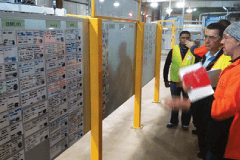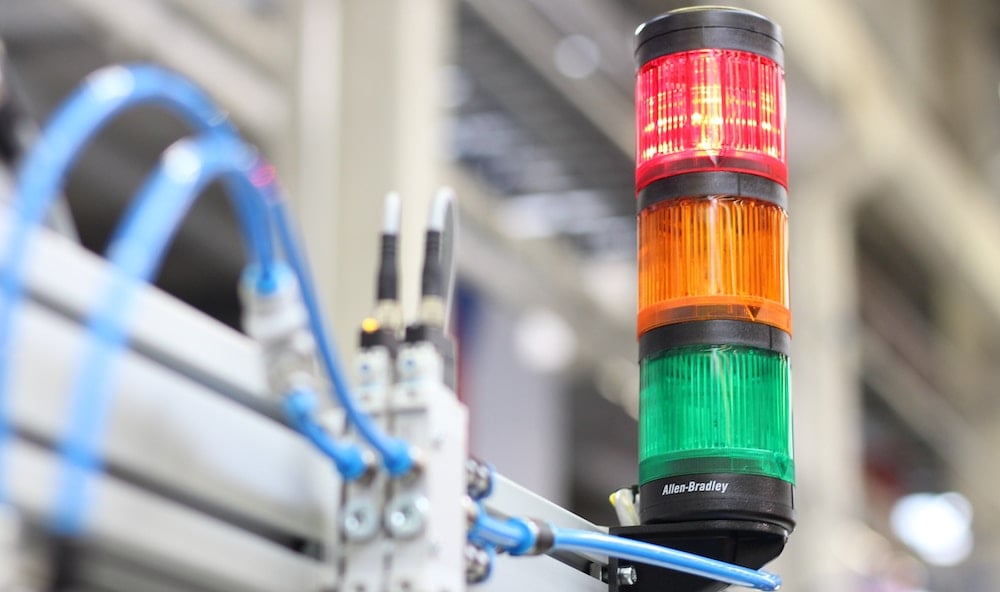
The lean revolution started around 30 years ago with the “Quality Movement” lead by the likes of W. Edwards Deming.
Our understanding of quality has improved enormously over that period, as have customer expectations of quality.
However at TXM our lean consultants still find companies, especially in Asia, that struggle to meet the challenge of first time right, every time.
So what are the top techniques and tactics we have discovered to improve the quality of products and services?
1. Be Serious About “Quality First”
We all say it, “Quality comes first”, but do we mean it. Will we ALWAYS stop production before we produce more defects, are we ALWAYS confident that the product we are sending to a customer meets their requirements.
The concept of first-time quality or quality at the source is a simple one. That is, every process is responsible for their own quality and will not pass defects on to the next process or on to the customer. Achieving this is much harder.
In my experience, a common reason is that managers send out mixed messages. When product needs scrapping or rework or gets returned from the customer they will be frustrated and will lecture and even discipline operators for their “mistakes”. However when the pressure is on to meet sales or production targets or when the factory is behind schedule they will pressure the same operators to run machines that are not quite set up correctly, tell them to “run production and we will fix them at the end” or authorise a “borderline pass” when quality drifts outside specification.
“Run production and we will fix them at the end”
Operators and teams are very good at detecting this kind of hypocrisy and will read it as a clear message that “management is not serious about quality so why should I be”. And they would be correct. Only when you are 100% consistent as a manager and prepared to stop the process to achieve quality will your teams see that you are actually serious and follow your lead.
2. Challenge 100% Inspection
If we are really serious about delivering quality to the customer we will inspect 100% of the goods, right? ….WRONG!
If we are really serious about delivering quality to the customer we will do everything we can to prevent the defects being created in the first place.
When a process is out of control (not capable of consistently achieving quality in specification) then we need to inspect products to attempt to prevent those defects from getting to the customer. Sometimes this inspection is mandated (such as with aerospace or pharmaceuticals) or the consequences of a defect are so high that inspection just makes sense (e.g. medical implants). However, this inspection should be seen as the absolute last line of defence and under normal conditions should find no defects (because they will be eliminated upstream).
Unfortunately, we often see (especially in Asia) 100% inspection being seen as a means to achieve quality. This does not work for a number of reasons.
Three Reasons 100% Inspection Does Not Work
Firstly no inspector or inspection system is foolproof. If you have defects, you can be sure that some are getting to the customer, despite your inspection.
Secondly, the inspection acts as a “security blanket” often covering up poor maintenance, poor machine set up, inadequate operator training or process short-cuts. People upstream in the process know they can “get away with things” because the inspectors will “catch the problem” before it gets to the customer.
Thirdly inspection is very very costly. Add the cost of the inspectors’ wages, to the cost of the production they reject, the wasted production capacity (first making and then reworking the defective product), the cost of moving and storing defects around the factory and the delayed deliveries and you will quickly find that a relatively low level of defects can represent a very big chunk of your manufactured cost. Therefore the purpose of inspection (if you have it) is to find and eliminate the sources of defects. To quote a mentor of mine 25 years ago:
- No inspection without recording.
- No recording without analysis.
- No analysis without action.
3. Solve Problems Every Day

We all hate having problems. We all want things to run “smoothly”. However, running “smoothly” in manufacturing usually means that we are not observing the everyday problems that affect our teams’ ability to achieve quality.
The Japanese lean coaches that taught many of the TXM team would say “no problems are a problem”, meaning that no problems mean that we are not challenging the current standard and trying to improve. My comments above about inspection hiding problems are a good example.
When something goes wrong we need to take that as an opportunity to find and eliminate the root cause. We think that problem solving should be part of the daily shop floor meeting of every team in your business and that everyone should be trained to use or participate in using simple problem-solving techniques such as “5 Whys” or “Cause and Effect Diagram.
We recommend simple magnetic concern strips to solve everyday problems and for more complex problems suggest an A3 problem solving or 8D approach. Use of complex statistical tools such as the design of experiments or components of variation analysis is rarely needed as most problems can be solved using very simple tools that everyone can understand. To learn more about TXM Solving Problems Every Day (SPED) visit our lean problem-solving page, read our other articles on problem-solving.
4. Standardised Work
“If you don’t have a standard, how can you improve”.
Standardised work is the most fundamental element of a lean production system. The first “rule” of lean is that “All work is standardised in terms of timing, content, sequence and outcome.”
This means that everyone does the same job the same way, with the same steps, in the same order and should get the same result in the same time. Standard work is not about writing a standard operating procedure, it is about engaging a team of employees in a discussion of how work is actually done, breaking down the steps and agreeing the best method.
This then becomes the standard and everyone in the team then agrees to follow this standard unless the team find and agree a better way. It sounds very simple and logical, but if you do things the same way every time, if operators are all trained in the same method, then you should get the same result. That is exactly how it does work.
When something goes wrong then, the first question is “what is the standard?” and then “did we follow it”. We can then quickly see whether the problem was caused by a deviation from standard (in which case we need to find out why) or some other cause (such as a material quality defect). Standard work is not just limited to production tasks but can apply to almost every activity in the business.
5. Andon
See also Andon- the Bright Lights of Lean Andon systems are simple signalling systems designed to enable an operator to quickly signal that he or she has a problem. The operator pulls a cord or pushes a button which triggers a visible and/or audible alarm.
The team leader is then required to respond to the operator to help with the problem. The problem then gets escalated further if the team leader cannot resolve it and production will cease in the meantime. This is again a very simple Lean tool but incredibly powerful.
It entrenches the idea with the operator that they are not to pass on quality defect to the next station and empowers them to stop the line and raise the alarm if they have a problem. It also quickly re-aligns the priorities of the organization, focusing leadership on supporting the operator to achieve a quality outcome.

This is fairly challenging, but when adopted leads to a dramatic change. Our Master Sensei, Tony McNaughton, tells us that when Toyota took over a former GM plant in Australia, an Andon system was the first thing they installed – before any other capital investment.
Quality is one of the favourite topics for the TXM Blog. If you want to learn more look at some of these other articles or contact us.
- Case Study on How Solving Problems Every Day Achieved a 75% reduction in Defects.
- Learn how to define standard work in your operation
- Learning to Define the Problem
- Focus on the Logistics of Problem Solving
- The PDCA Cycle
- Fishbone Diagrams to Solve Manufacturing Problems
- Order Problem Solving Concern Strips.







